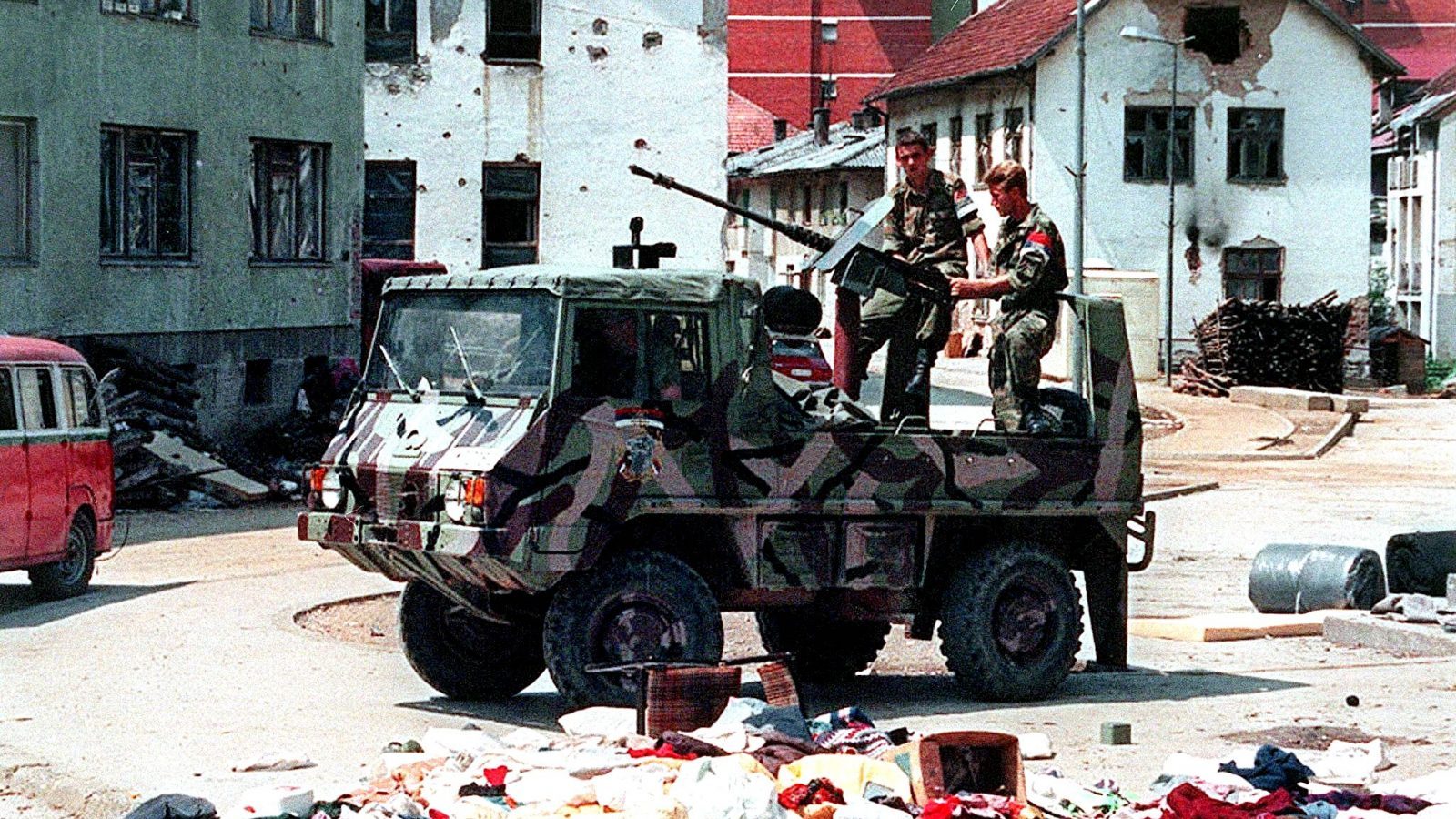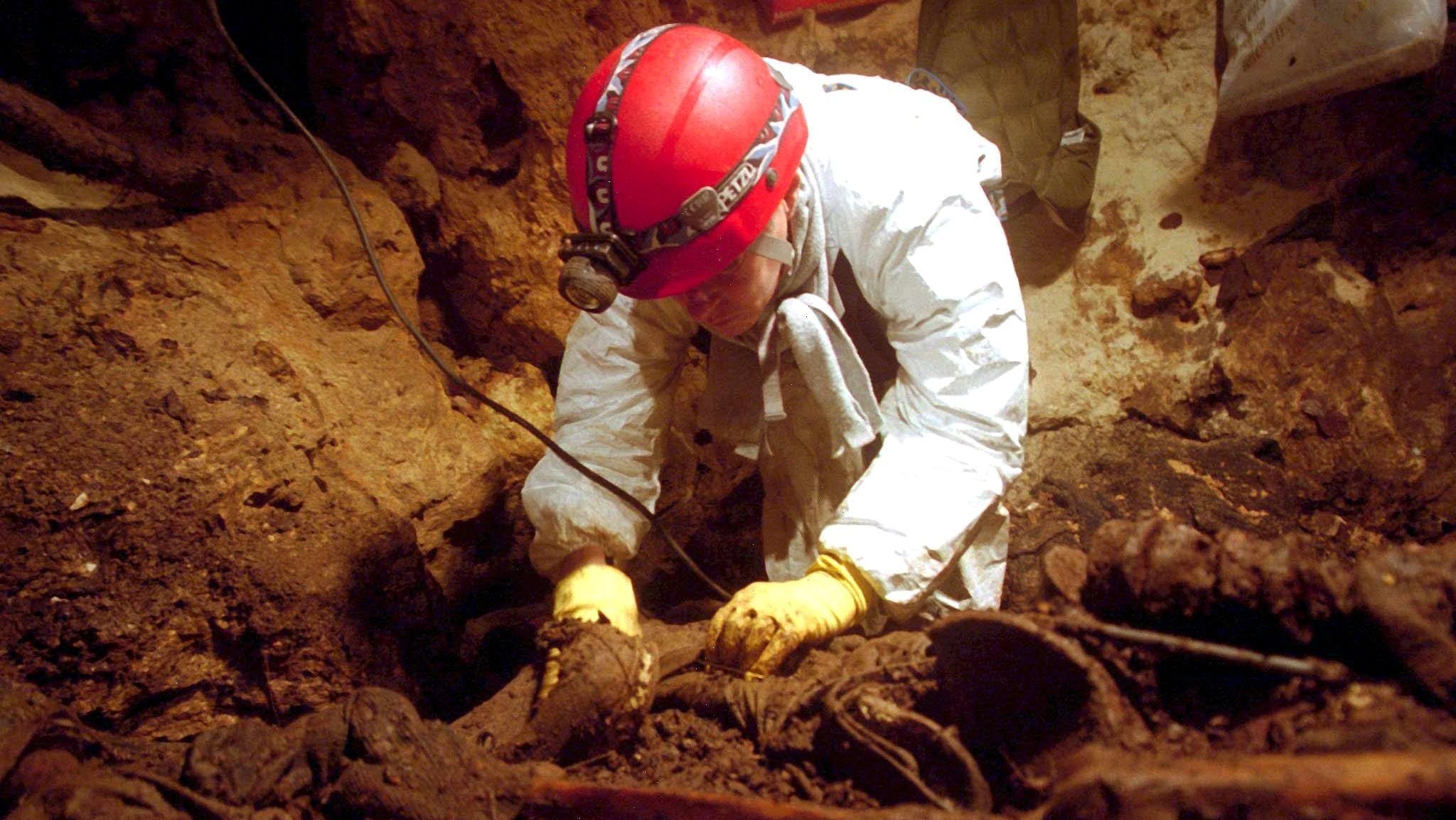This post is also available in: Bosnian

Seasoned Macedonian photographer and European Press Agency contributor Georgi Licovski is a well-known name in his country and abroad.
But he admits that during the early days of the 2001 armed conflict in North Macedonia, his experience accounted for little as he too was caught up in the prevailing chaos and adrenalin rushes that could have cost him his life.
One of the pictures that has stayed with him from those days, and that he says encapsulates best the early confusion of the war, is of two teenage boys, who were rushing to carry ammunition boxes to a nearby machine gun outpost, exposing themselves to grave danger.
It was taken in mid-March 2001, on the second day of the war in this ethnically-mixed but Albanian-dominated north-western town, when Albanian insurgents stationed in the nearby hills started shooting at the security forces who were defending the town below.
“I was there on day one , when after a rally in the city centre, the shooting from nearby hills started,” Licovski recalled.
But the second day he managed to reach Kultuk on the outskirts of Tetovo, a place teeming with army and police forces repelling fire from the rebels up in the hills. It was there when he first found himself in the thick of battle.
“The street was filled with empty bullet casings. Everyone was full of adrenalin. Everything was new for everybody,” he said. “I was not even aware how dangerous it was.”
Hidden behind a house and a parked armed personnel carrier, he first spotted a group of local residents apparently helping the security forces by filling up an emptied heavy machine gun’s ammunition cartridges.
Further up the street there was a machine gun post that had been firing on the insurgents in the hills above. “There were three soldiers inside. I decided to run to the outpost and join them. When they saw me they first got angry, telling me I was crazy. Later though they settled in and let me stay, as long as I kept my head low from incoming bullets,” Licovski said.
“That is the strangest feeling. When someone is shooting at your direction. He does not even know you but he wants to kill you.”
And it was around that time that he spotted the two boys running from below him, carrying the ammunition boxes to the post.
“They must have been 14 or something years old. Underage certainly. They were carrying these boxes filled with previously filled up cartages, obviously trying to help,” he remembered.
“The street filled with empty shells. The expressions on their faces telling everything about those first days, the enthusiasm, disregard for their safety… And the house you see on the photo was the last one before they had to run some 30 to 40 metres out in the open clearing before they reached the post.”
In the chaos, this photo opportunity could have costed Licovski his own life. He recalled that as he was searching for the right moment to take the shot, he unknowingly nearly got into the line of fire of another machine gun below him.
“It was a police officer who grabbed me by my leg at the last second and pulled me back,” he said.
The siege of Tetovo, with ethnic Albanian insurgents shooting down at the town and the army and police defending it from below, would go on for the next few months. Several back-and-forths would not change the situation at the front but the insurgents were helped by the huge Shar mountain nearby, which offered them a place to retreat when the security forces mounted a counter-attack.
It was to remain one of the main fronts during the armed conflict, which ended in the summer of the same year with the signing of the internationally brokered Ohrid Peace Accord. The accord envisaged greater rights for the country’s ethnic Albanians who make up about one quarter of the population, in exchange for a NATO-implemented disarmament.
The photo of the two boys was shot at a time when the idea of war and the chaos and suffering it brings was very fresh in North Macedonia, when what started as a series of guerrilla attacks on security forces was just threatening to spill out in an all-out conflict.
Licovski never saw the boys again, but the photo was published and widely circulated.
Later during the conflict, he recalled, as personal tragedies piled up and funerals offered more photo opportunities, he became much more restrained about what he should offer for publication and what to keep for himself, and when not to take any photos at all.
“I was hit by these tragedies emotionally. It is not an easy thing to interfere in people’s most intimate moments, when they say their farewell to their most beloved,” he explained.


